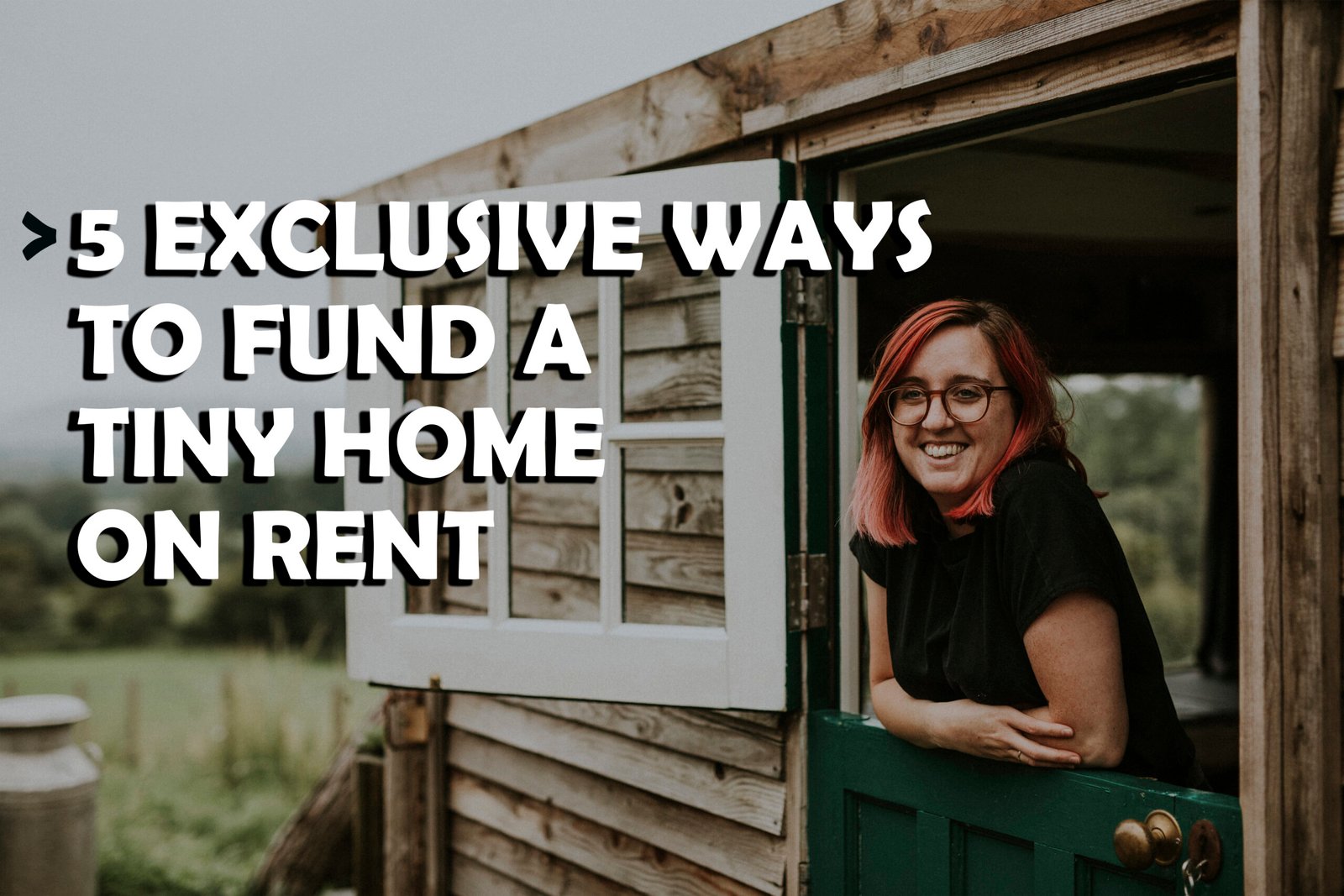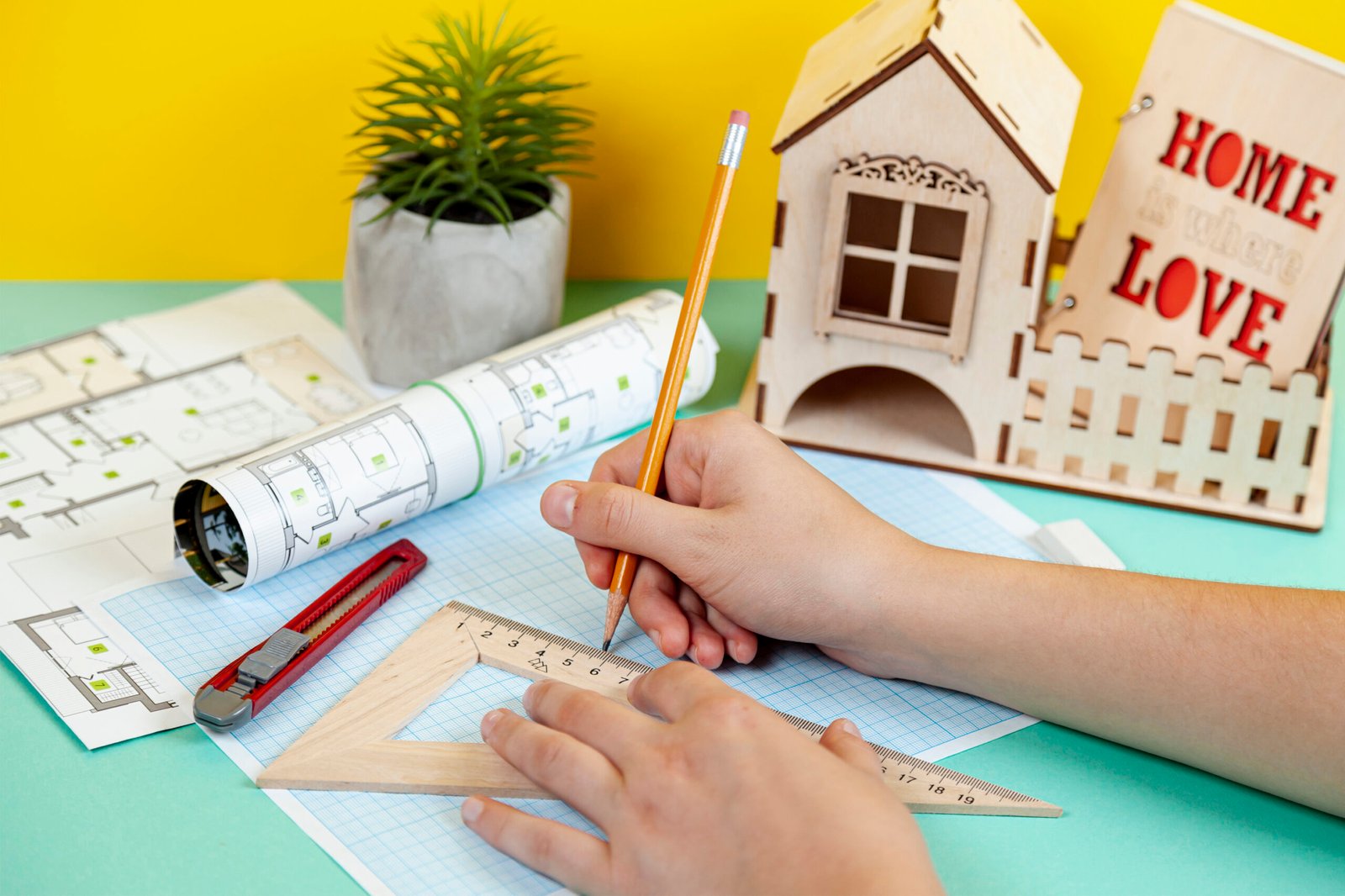Discover 7 smart ways to fund a tiny home on rent. Learn how to finance your dream space affordably, even without land ownership, and start living freely.
Introduction to Ways to Fund a Tiny Home on Rent
Tiny house fame has exploded in recent years, with more and more individuals yearning for simplicity, affordability, and environmental responsibility. But what about if you can’t afford to purchase land? Relax—you’re not the only one: numerous tiny house advocates find themselves trapped by the barrier of buying land. Getting financing to place a small home on leased land means facing new legal, financial, and logistical hurdles. But there’s no solution to every problem with sufficient planning.
Here, in this book, we will be talking about real sources of funding, landlord contract law, budget projections, pros and cons, and an expert’s guide to make your process simple. Whether you envision your mini home to remain on rented ground or to seal a backyard bargain, you will have useful tips to make your dream come true. With frugal budgets, open communication, and careful planning, your leased property tiny house dream is now no longer a dream but a liberty and a cheap
Can You Put or Build a Tiny House on Leased Land?
Yes, one may reside in a small house on leased land—in circumstances and with frugality. Typical places are country lots, backyard accessory dwelling units (ADUs), trailer home parks, and leased farm fields. Each case is varied with its zoning, lease, and facilities required.
1wregulations, zoning codes, or county ordinances determine whether a small house (such as a mobile home) is a permanent residence or not. Small foundation homes are accepted in some zones, but to others, they remain mobile RVs.
Research zoning laws, building regulations, and lot minimums before building or installing.
The owner’s signed contract is essential. The contract should specify permission to mount and dismount the little house, use of facilities, maintenance, and stay duration. Accuracy prevents future altercation or even eviction.
Another one that is simply unavoidable is the availability of utilities: electricity, water, septic, and internet connections may involve permits, equipment rental, or infrastructure upgradation as a prerequisite. Your success lies in consulting local authorities and landowners in time.
Sample options include licensed back yard projects (five or more years) or long-term rentals, which are most secure and flexible. RV park sites are quick and easy, but most likely come with a monthly fee. Leased farm property can offer rural seclusion and quiet, but maybe with more DIY installation of infrastructure.

5 Exclusive Ways to Fund a Tiny Home on Rent
Getting hold of financing for a tiny house, because when you do convert it into a rental place, you can face difficulties, but it’s not unlikely to be doable.
dissimilar ascentors homes, small houses often don’t qualify for standard mortgages, especially if they’re built on wheels or are not on a permanent foundation. This means you’ll need to switch to alternative funding options, such as personal loans, savings, specialized small home usurer, or ideal financing models like crowdfunding or co-investment. All of them have their own qualification criteria, fees, and payment terms & conditions, and so one will have to select the one that can fit your budget, calendar, and risk tolerance. These are some of the most pragmatic and painless finance instruments people use in 2025 to realize their small house dreams–even on rental houses.
✅ 1. Personal Savings Pay cash
(The safest and lowest interest-generating way to fund a small house.)
Others simply save and save for years just so they’ll never have interest or loans.
This also gives you complete control of your building time and budget, and no payment schedules. The catch? It will cost more to save for it if you desire something slightly higher in quality or custom-made. But to some who desire the liberty money can bring, advanced savings are not impossible.
✅ 2. RV or Tiny Home Loans
(Some lenders now offer tiny home and mobile home loans, especially those that have been RV-certified.)
These loans will generally demand a good rate of credit and will demand 6% to 10% interest. They will demand proof of placement—such as the executed lease document in rented land—and will probably demand the guarantee that the house will be constructed according to specifications. It is a good choice if you want a payment plan with reasonable interest.
✅ 3. Personal Loans
Unsecured internet bank personal loans are used to finance small-sized house building, especially houses with less than $50,000. It is given on the basis of your earning capacity, history of loan repayment, and loans. Despite being easily available and collateral-free, the loans typically have a higher interest rate compared to RV loans. It is a straightforward option but needs to be sought after carefully, with the lenders usually taking advantage of the customers in the form of unfavorable loan terms.
✅ 4. Peer-to-Peer Lending or Crowdfunding
Websites like LendingClub, GoFundMe, or Kickstarter allow you to raise funds from a huge crowd. If you are suggesting a green living project or wish to raise funds amongst your friends and local residents, these sites raise money in an innovative manner. They would succeed if you have a real cause or goal towards your building. Even though it’s likely to fail, a well-planned campaign will overlook or downplay the utilization of traditional loans.
✅ 5. HELOC or Home Equity Loans (via Landowner Partnership)
If you’re building on a friend or relative’s land—and they own their home—they may be willing to use a Home Equity Line of Credit (HELOC) to help fund the project. This kind of partnership can make financing easier and potentially cheaper. However, it requires trust, clear legal agreements, and shared financial responsibility. It’s a smart option if both parties stand to benefit from the arrangement, such as shared rental income or property improvement.
Lease or Land Contract Issues
Before you place your tiny house on rented land, a carefully written and legal land-use or lease agreement is important.
With the personal hookups, mobile problems, and other living normal in tiny home arrangements, having things in writing is vital.
No matter if renting an RV lot, a neighbor’s property, or a plot of land in an RV park, establish rights, responsibilities, and the length of stay. This prevents miscommunication and is a safeguard to both parties in case of a dispute or the sale of the property. A good lease document should cover the use of the utility, rent cost, alterations of the property, liability issues, and termination terms.
For goodness’ sake, you’re giving good money to another person’s realty—a building. Hard, tough compliance with the law is your best option. If you feel you do, acquire yourself a real estate lawyer and take this offer seriously as you would any long-term home lease contract.
✅ Essential Points in the Lease and Land Contract:
Lease Term and Renewal Provisions
Ensure your lease duration aligns with your investment timeline. If you’re spending $30K–$80K on a home, short-term or month-to-month leases may be too risky. Seek long-term or renewable agreements to provide stability and peace of mind for both parties.
Utility Access and Responsibilities
Spell out how utilities like electricity, water, and septic will be accessed or installed. Simplify whether you’ll compensate the landlord or set up your systems. Double-talk here can lead to disputes and costly neglect.
Installation and Removal Clauses
Insert language on whether you will be adding on permanently or temporarily or changing the property. Insert language on who will demolish the small house if the lease is up or if you terminate occupancy early.
Liability and Insurance Coverage
Identify who is responsible in instances of loss, accidents, or damage. It is reasonable to have your own policy as a renter or small homeowner, and require the landowner to have his as well. Written documentation safeguards everyone.
Exit and Sale of Property Clauses
Your agreement should also state what would happen if the house were foreclosed upon or sold. Your 60 to 90-day plan so that you may move on or renegotiate if your situation otherwise becomes ambiguous.
Dividing Construction Costs of a Tiny House on Leased Property
When constructing a tiny house on leased property, something aside from the house is at risk.
From transport liabilities and site preparation to empower and ongoing utility bills, it’s essential to study the total investment.
While the initial cost of a tiny home can range from $30,000 for a DIY build to over $100,000 for a creative model, that’s only part of the financial image. Make sure that you will be with the account for how the home will be delivered, installed, and connected to essential services. When one rents land, one also bears continuing expenditures of rent, insurance, and maintenance. Setting up those expenditures as part of the initial budget eliminates the risk of having unforeseen costs down the line.
This cap allows future small dwelling consumers to plan ahead, be realistic about long-term spending, and not under-invest in the lifestyle desired. Most Important Cost Considerations: Tiny House Building (DIY, Factory Built, or Customized)??? DIY building is $20K–$40K but time and labor, and equipment and time. Factory-built home is $50K–$70K with quick turnover. A luxury custom home with plush amenities is more than $100K.
🏷️ Your choice hinges on your expertise, design acumen, and budget:
- Site Prep and Delivery Fees
Mobile home relocation to rented land will be $1,000–$5,000, depending on distance. Site preparation will consist of ground leveling, foundation or anchor construction, and general vehicle access—all working toward initial expenses.
- Utility Installation
Power, water, and sewerage hookups will be $3,000–$15,000. If the land already has utility access, it will be less expensive for you. Otherwise, consider remote options such as solar, compost toilet, or water tanks.
- Permits, Zoning, and Inspection Fees
Temporary or mobile occupation permits can be required by local governments. Fees are site-specific but may cost $500–$3,000. Electrical and plumbing compliance inspections are sometimes required.
- Home Expenses (Rent, Insurance, Maintenance)
Rent you have to face around $200 to $800, depending on location. Additionally, you will have insurance for the structure, which can easily cost you around $400–$1,200 per year—factor in repairs, pest control, and seasonal maintenance to avoid surprises.
Strategies for Financing and Building a Tiny House on Leased Property Successfully
You can construct a small home upon leased land—but only through good planning, good friends, and a generous heart.
In buying the old-timey house on owned land, this transaction involves other considerations and risks.
But it is cheaper to start, expands more rapidly, and offers greater place mobility. To deal the deck in your own hand, listen for good land bargains, pre-zoning analysis, and wait for something other than the build. Your best tiny home residents are those who treat the process as seriously as if they were building a regular house, with thoughts and dreams. These professional success tips will help you reduce risk, be more prepared, and prevent costly mistakes while making your small house dream a reality.
🔑Professional Success Tips:
- Lock into Long-Term or Renegotiable Lease Contracts
Negotiate longer leases or renewal options wherever possible. Short-term leases are riskier and erode your long-term cost recovery potential. Longer agreements give you a solid basis for your housing and financial plans.
- Screen the Landowner and Get It in Writing
Regardless of whether they are friends or relatives, use written agreements. Screen the landowner’s title to the property and reputation so that you can eliminate potential future conflicts. A written, signed contract for responsibilities is a source of peace of mind.
- Research Zoning Laws Before Investing
Research local building codes and zoning regulations before it costs money. Permanent occupation of mobile homes is prohibited or permitted only up to a limit in most locations. Failing to do this now burns thousands of dollars later.
- Save an Emergency Backup or Relocation Fund
Because your small house is to be moved, plan for the worst, like eviction, land auctions, or natural disasters. A $3K–$5K savings fund will cover moving costs, new rent, or lawyer fees as necessary.
- Select a Mobile Design for Maximum Flexibility
Wheelers (THOWs) are easier to tow and less likely to be a headache where zoning is concerned. They also sell when you finally do depart your tiny abode. Mobility ensures that you will never be in a bind if circumstances do change.
Benefits & Weaknesses of Fund a Tiny Home on Rent
Benefits of Owning a Miniature House on Leased Property
✅ Less Upfront Expense compared to land purchase – You do not incur the expense of purchasing land, property tax, and lending charges. You only incur construction and site implementation costs.
✅ Flexibility – Leasing gives you the ability to change locations if necessary—new sites, career shift, or progression through life stages.
✅ Fast Move-In – Saving time by not purchasing land. After you plan and negotiate, you can build and move into your small house fairly quickly.
✅ Get to Enjoy Lovely Location – Perhaps you get to reside in a hip city-edge or rural area where it would be far too expensive to own.
✅ Test Drive Lifestyle – Leasing lets you try the small living idea and how it would fit into your life without a long-term commitment.
Weaknesses and Challenges to be Aware Of
❌ Not Enough Long-Term Security – Renting contracts are terminated under brief notice or terms altered with ease. You can be evicted when the land owner sells or plans to use the land otherwise.
❌ Legal and Zoning Problems – Some ordinances of offered cities restrict permanent small houses or declare tiny houses as state RVs, prohibiting some localities or requiring improved infrastructures.
❌ Unavailability of Loan Facilities – Banks and traditional mortgage finance institutions do not offer loans for small houses unless they are land-fixed and land-owned.
❌ Relegation to Landowner’s Goodwill – Your home is at risk if the landowner refuses, fails to pay utilities, or refuses to renew.
❌ Access to Utilities Can Be Elaborate and Expensive – Rural or off-grid sites can include the costly DIY septic, water, or electric system installation.
Frequently Asked Questions
Q1: Can one finance a wheel-based tiny home?
Usually not. Mini houses on a temporary foundation usually qualify for personal or RV loans only.
Q2: When landlord alter the terms?
A clear escape clause in your lease is your savior. Always put terms and renewal in writing.
Q3: Can HOA or municipal zoning restrict tiny homes on rented property?
Yes. Always reveal local restrictions to avoid getting into legal trouble before building.
Q4: Can a tiny house be insured if it is on leased land?
Yes—most do insure tiny houses, especially if they are on the utility grid and titled with proper documentation.
Final Thoughts: Is It Worth It
Packing a tiny house onto leased property offers a special binding of affordability, portability, and independence that established homeownership can never get near. It allows you to live off-the-chain spaces and enjoy simple living with minimal economic barriers. The strategy does call for clever planning, good written agreements, and consideration of risk, though.
If you only need flexibility—guests when they’re young, migrant labourers, or settlers for temporary residence—the above can be all that you’d ever need. But stability, ownership, and permanent residing over the long term are what you’d prefer to have, so buying property could still be your next best bet for future business.
Finally, small on rented ground is all about creative planning, no-holds-barred contracts, and fiscal responsibility. And with these, you get to indulge in a tiny house owner’s paradise, minus land ownership fees. Who knew? This alternative route is just as fulfilling as penny-pinching frugality in 2025.
References:
- Tiny House Talk. “How to Finance a Tiny House.” (2025)
- LightStream. “Tiny House Loans 2025.”
- American Tiny House Association. “Zoning and Legal Guidelines.” (2024–2025)
- U.S. Department of Housing & Urban Development. “Accessory Dwelling Unit Regulations.”
- Investopedia. “Tiny Home Costs & Financing Options.”








